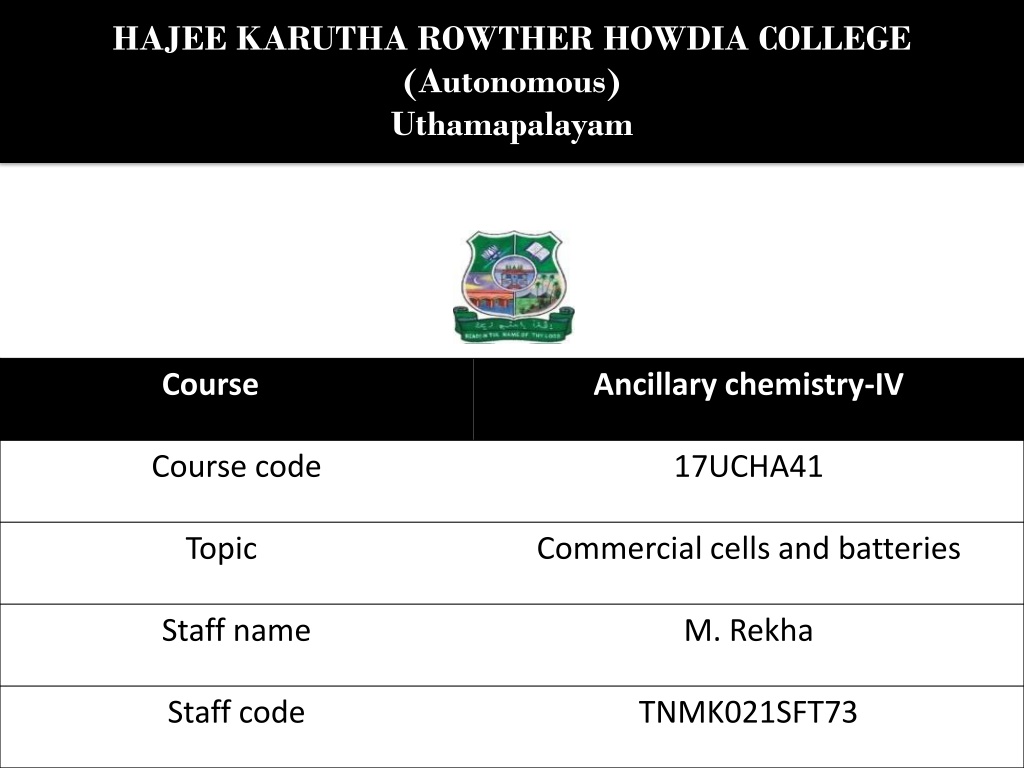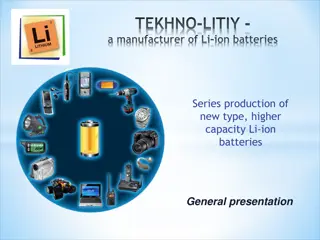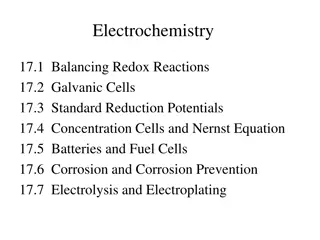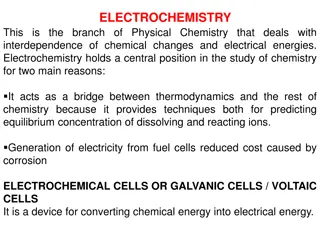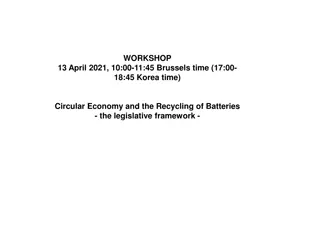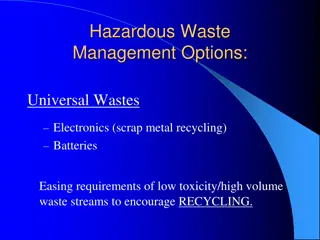Understanding Commercial Cells and Batteries in Chemistry
Commercial cells and batteries are essential sources of electrochemical electricity. There are two main types: primary cells, which are one-time use and irreversible, and secondary cells, which are rechargeable and reversible. Examples include dry cells and lead storage cells. The components and reactions of these cells play a crucial role in their functioning and energy production.
Download Presentation

Please find below an Image/Link to download the presentation.
The content on the website is provided AS IS for your information and personal use only. It may not be sold, licensed, or shared on other websites without obtaining consent from the author. Download presentation by click this link. If you encounter any issues during the download, it is possible that the publisher has removed the file from their server.
E N D
Presentation Transcript
HAJEE KARUTHA ROWTHER HOWDIA COLLEGE (Autonomous) Uthamapalayam Course Ancillary chemistry-IV Course code 17UCHA41 Topic Commercial cells and batteries Staff name M. Rekha Staff code TNMK021SFT73
Commercial cells and batteries Electrochemical electricity. cells act as a source of Few of the electrochemical cells have commercial importance called commercial cell . Combination of two (or) more electrochemical cells is called batteries .
Types of commercial cell Primary cells Secondary cells
Primary cells (or) Irreversible cells In the primary cells, as a result of the chemical reaction electric current is produced. Once the active chemicals are consumed, it doesn t produce electricity. They cannot be recharged, use and through type cells. Ex., Dry cells
Secondary cells (or) Reversible cells (or) Storage cells This type of electrochemical cells is readily recharged as the cell reactions are reversible in nature. Ex., Lead storage cells.
Dry cell or Leclanche cell It consists of graphite rod which is act as cathode (positive electrode). Graphite is surrounded by muslin (Fine cloth) bag contains a paste of carbon, manganese oxide (MnO2), zinc chloride (ZnCl2), flour & plaster of Paris. The zinc container serves as the anode (negative electrode). Electromotive force (EMF) of this cell is 1.5 V.
Zn Zn2++ 2e- (oxidation) anode Cell reaction 2MnO2+ 2NH4+ + 2e- Mn2O3+ 2NH3+ H2O (Reduction) Cathode Net cell reaction Zn + 2MnO2+ 2NH4+ Zn2++ Mn2O3+ 2NH3+ H2O
Lead storage cell (or) Acid storage cell It consists of lead plate as anode (negative electrode). The cathode is lead plate coated with lead oxide. Two electrodes are immersed in sulphuric acid.
PbSO4+ 2H++ 2e- (anode) Cell reaction Pb + H2SO4 PbO2+ H2SO4+ 2H++ 2e- PbSO4+ 2H2O (cathode) Net cell reaction Pb + PbO2+ 2H2SO4 2PbSO4 + 2H2O
Reference books: Principles of physical chemistry: Puri, Sharma, Pathania (revised edition, Vishal pub.,2010)
